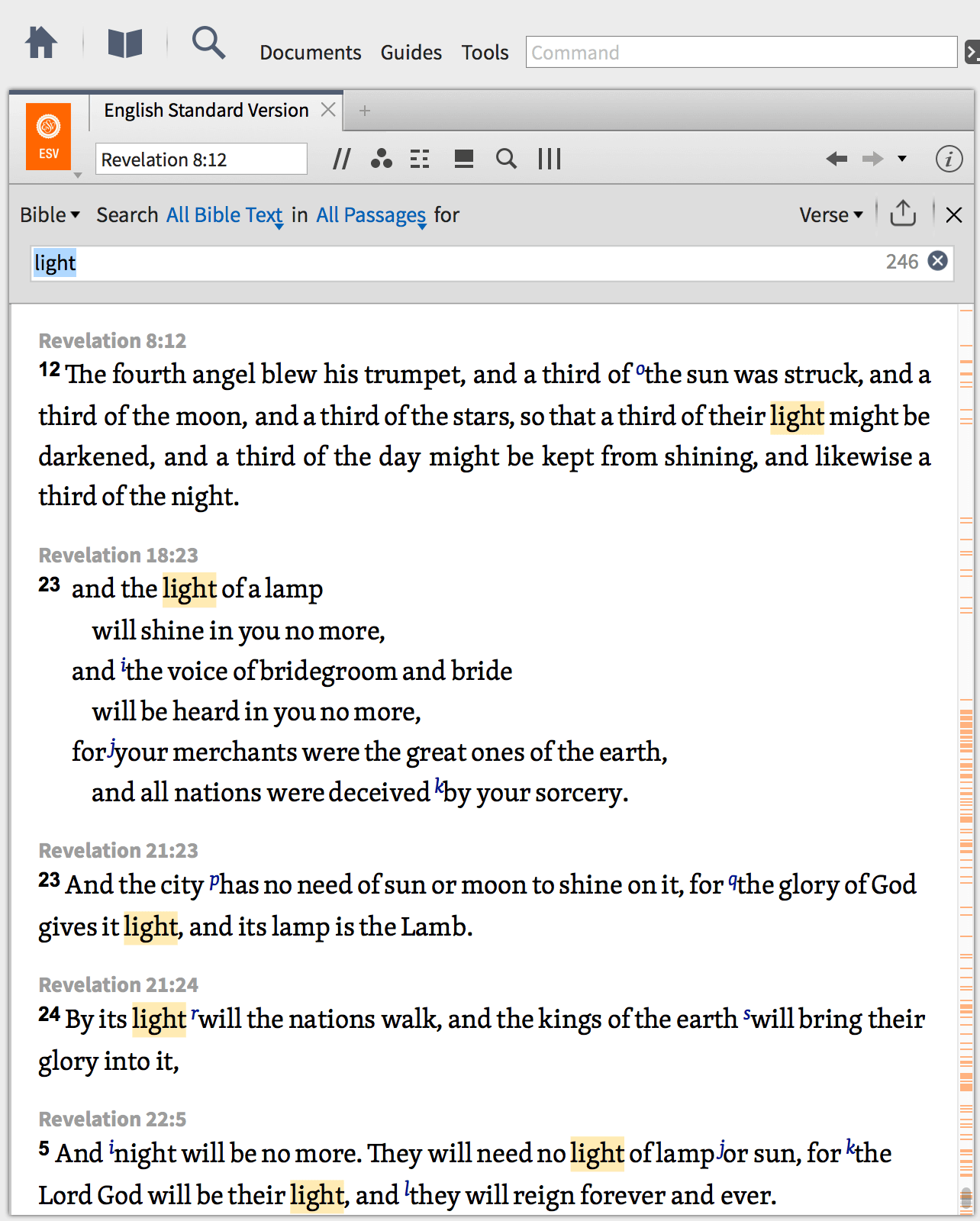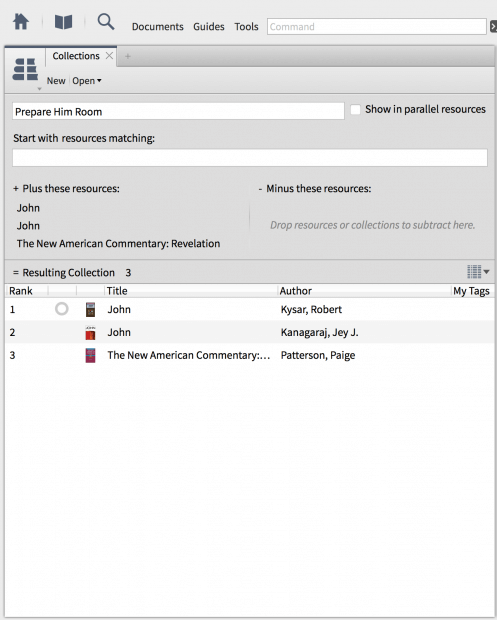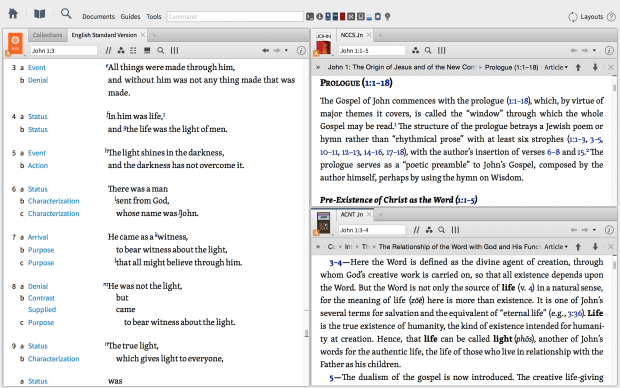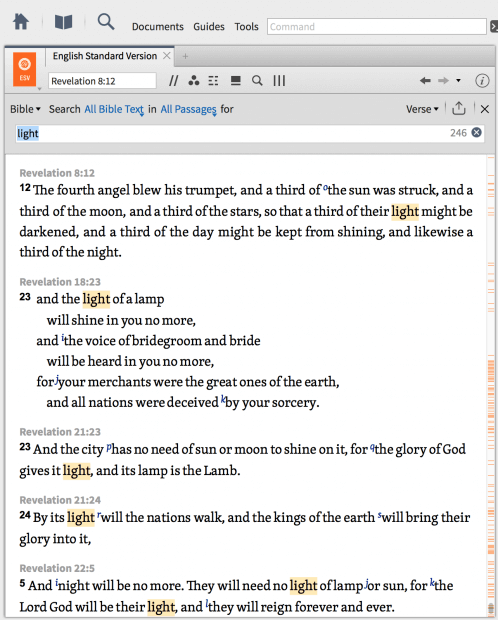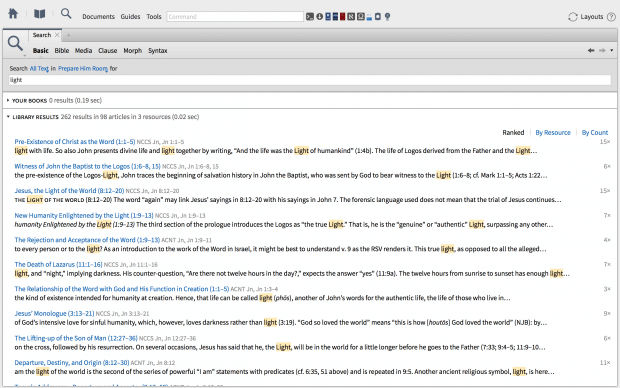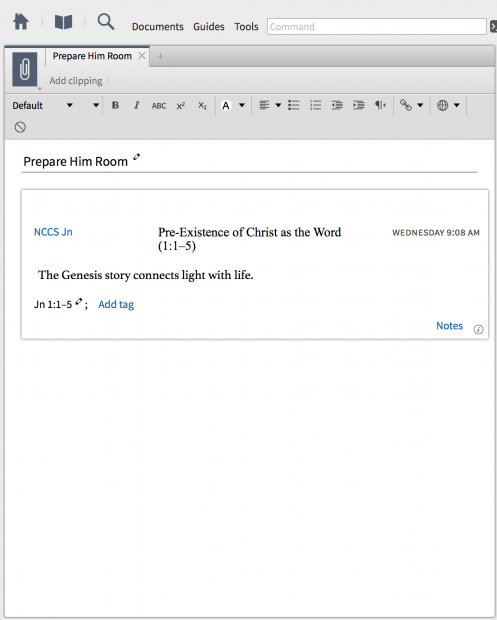Today, I’d like to walk you through how you can use Logos to prepare a Christmas Bible study, whether it be for your small group, or for the entire church. I’ll be studying my favorite account of Jesus’ advent: the Gospel of John.
But wait! The Christmas story is only found in Matthew and Luke’s gospel! I beg to differ. While those are indeed the two narrative treatments of the earthly events, John’s Gospel adequately recounts the spiritual and metaphysical side, as we’ll see today. Furthermore, John’s story takes us from Genesis through to Revelation.
Create a collection
First, I want to gather my intended resources and create a collection:
- Go to Tools
- Under Library select Collections
- Then, drag and drop book icons from your library to the + Plus these resources section.
As you can see, I’ve added three volumes, the Augsburg Commentary on the New Testament: John, The New Covenant Commentary on John, and the New American Commentary on Revelation.
Open the ESV
I’ve enabled Propositional Outlines in my ESV Bible. This reformats Bible text into an outline that shows how ideas fit together, how the text flows, and how each line relates to the next. (New Testament Propositional Outlines are included in all Logos 6 base packages.) For our purposes, I’d like to highlight three tags.
3a Event – All things were made through him.
John here clearly relates this to Genesis and the creation narrative.
5a Event – The light shines in the darkness.
Yet another relation to the creation account.
11a Arrival – He came to his own.
This helps me gain a clear picture of the passage outline, and helps me focus on the appropriate points of study. Now, let’s compare commentaries.
Compare commentaries
I would like to see what the commentaries have to say about each of these verses. Fortunately, there’s an easy way to link your resources.
In the ESV, go up to the upper left hand corner, open the resource menu and select Link Set: A. It doesn’t matter which letter you use, but all the resources you link will need the same letter.
Then, I go to my commentaries and add the same link set. Now, you see that as I scroll through my text, it automatically moves to the corresponding commentary.
And here I read, in Robert Kysar’s commentary:
Life is the true existence of humanity, the kind of existence intended for humanity at creation. Hence, that life can be called light (phōs), another of John’s words for the authentic life, the life of those who live in relationship with the Father as his children.
This is a fantastic reminder of the connection between light and life, and plays heavily into the incarnation. But I’d like to expand my study and see how the term “light” is used throughout scripture.
Search your Bible inline
To search the whole Bible, all I need to do in the ESV is click the magnifying glass, and type “Light.” Now, I can go all the way back to Genesis where light is first pronounced “good.” Then I can read through all my search results, eventually coming all the way to Revelation 21:23, which reads, “The city has no need of sun or moon to shine on it, for the glory of God gives it light and its lamp is the Lamb.”
Again, this is re-iterated in Revelation 22:5, “And night will be no more, They will need no light of lamp or sun for the Lord will be their light, and they will reign forever and ever.”
Now that I’ve located every place “light” is used in my English Bible, I can dig into the underlying Greek and Hebrew to identify connections to John’s prologue. In an earlier post, I showed how Matthew’s opening prologue emphasizes Jesus’ kingship and right to reign. But John’s opening excursus primarily focuses on light. Revelation ties these two gospel accounts and their respective themes together. In Revelation 21, the lamb, Jesus, serves as the light for the city. And in that city believers reign with Christ forever. This is one of the most exciting aspects of the gospel: Jesus, who is the light, permits believers to reign with him in his Kingdom forever.
Research cross-references
Let’s check our Revelation commentary to see if we’ve missed anything. As Paige Patterson notes:
The expression, “There will be no more night,” brings to memory that “men loved darkness instead of light because their deeds were evil” (John 3:19). However, evil deeds are no longer a part of the heavenly scene, and so there is no love of darkness and no presence of darkness.
This is powerful! There is amazing richness in tying the birth of Messiah to the eschatological fulfillment in Revelation.
Some have said you can’t have the baby in the manger without the man on the cross. But I believe this falls short. In reality, you cannot have the baby in the manger without the man on the cross—and the king on his throne.
Search the collection
Now that I have my area of focus, I want to search my collection.
- Click the search icon.
- Click Everything
- Select your collection (I’ve named mine Prepare Him Room)
- Type your search term. I’m looking for “light.”
Now I just need a place to save these insights for future use. That’s where the clippings document type comes in handy. Go to Documents, Clippings, and rename your new document. I called mine “Prepare Him Room.”
Searching for occurrences of light
When I open the resource from the search results, I now see that every occurrence of light is highlighted in the text. I read, in Kysar’s commentary: “The Genesis story connects light with life.” That is the good news of Jesus birth: light and life have entered the world. I’ll add that to my clippings document and continue studying.

